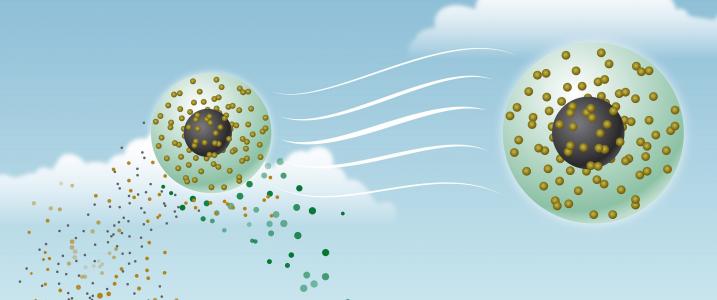How far society has come in so short a time I find remarkable. Just in my lifetime, astronauts have landed and walked on the moon. The computer has literally gone from filling up rooms in their entirety to being reduced to the size of a microchip, in some cases no bigger than a fingertip. And who knows how much shorter the average lifespan would be if not for the help and advances of modern medicine?!
It’s called progress. And at the root of it all: science.
There is much good that has come from it. But, truth be told, much has come at a cost as a result, that being its environmental fallout.
Though it is expected, that particular aspect in no way, shape or form has to be accepted. Without question there are things that can be done to successfully address the negative environmental-impact fallout.
Name practically any of our modern-day conveniences and it is because of science through critical thinking, discovery, innovation and invention that we have these. And, we have these at all because somewhere some thing either was lacking or was perceived to be.
With regard to pollution in our air and more specifically to its universal cleanup, some thing is lacking here too. It’s called an overarching commitment in terms of it being used, sequestered and even prevented.
Okay, so what do I mean when I talk about use and sequestration?
Let’s cover sequestration first. Prevention, meanwhile, is reserved for last.
In a nutshell, sequestration deals with removal as in removing the pollution in the air already there. One of the big ideas getting a considerable amount of press as of late is the sequestration of atmospheric carbon. And, there are treatments that can be applied to render some air toxics like oxides of nitrogen (NOx) non-life-threatening if not non-existent. You can think of this idea like the way one would view cleaning solvents; in this particular instance this one being a NOx-remover, NOx-eater, if you will. At the root of this is science.
Which now brings the conversation to use.
So, consider methane for a moment. True, it’s a pollutant, yet it can be a source of energy. Think as a fuel, for one. We often hear about methane leaks and how if this was corralled, that is, if it was not allowed to escape into the air, it could be put to work for us. And, the capability with which to take advantage is there. Not in every situation, mind you, but in a good many. And, it is through scientific processes that could help get us there, in other words, to enable this. Here again, behind this: science.
And, then there’s prevention. Easier said than done, right?! Wrong! It doesn’t have to be this way. If there is a will, there’s a way, is what this all comes down to. That is if we want to – it’s all up to us and it’s up to us all.
Before the rains came yesterday, in the Fresno, California area where I reside the air for quite some time had been nothing better than moderate and, at worst, it had become unhealthy for all who breathed it. During that situation the Air Quality Index had reached at least 150. The pollutant of concern was fine particle pollution – PM 2.5 or fine-particulate matter less than 2.5 micrometers in diameter, about 20 to 30 times smaller than the diameter of a human hair. Small enough to lodge deep into the lung or enter the bloodstream where it can travel to other organs in the body and the brain, where it can cause any number of health problems including heart attack, stroke, lung disease, cancer among them. And, that’s just one of myriad pollutant emissions.
I, for one, don’t understand why anyone would accept that, put up with it. We could take a stand and vow not to allow it, vow to help prevent it.
But, how, you might ask? Well, I can think of three successful approaches or strategies right off the bat: Through education, enforcement and pro-action.
Education: One great educational tool is the public service announcement (PSA). There are a couple airing on the local broadcast television networks right now. These have to do with fireplace use and the restrictions thereof.
Others are sites related to air quality, air pollution and the environment online. This plus magazine articles, books, broadcast news and newspaper reports and the like. Workshops, seminars, you name it.
Enforcement: This has to do with rules, regulations, restrictions and their compliance. Regarding going beyond this, no further explanation is needed.
Pro-action: Pro-action means exactly what it says: being pro-active. This is all about acting on one’s own to reduce one’s own negative air-impact footprint. The sky’s the limit in terms of what can be done. Be it at home, on the job or out and about, one, two or all three, it’s all good.
Beyond this, above and beyond, actually, it’s all a matter of how much we want out of our lives (and bodies) the bad air we are inhaling and what we are willing to do to make that happen. That’s really it folks, the long and short of it.
Image above: Pacific Northwest National Laboratory
This post was last revised on Jan. 24, 2021 @ 10:07 a.m. Pacific Standard Time.
– Alan Kandel
